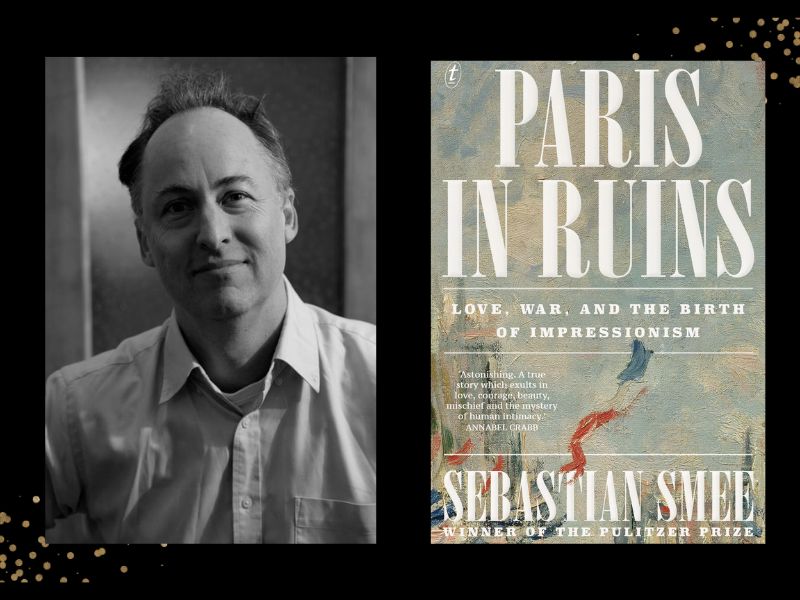An often overlooked section of history and its link to the birth of Impressionism is the subject of Sebastian Smee’s readable and impeccably researched book. Paris In Ruins: Love, War, and the Birth of Impressionism.
Picture Paris, 1870. Napoleon III had fallen and the capital was under siege from Prussian forces. Food shortages and harsh winter conditions meant the city’s residents had suffered greatly. Four months later, the siege ended when the Prussians entered the city. A brief, radical socialist government, the Paris Commune, took over. Violence and demands for social reforms eventually climaxed in the ‘Bloody Week’ of May 1871.
Against the backdrop of the siege, Impressionism was beginning to form. Edouard Manet is Smee’s focus, although there are guest appearances from Degas, Monet and Pissaro. Perhaps Smee’s most outstanding achievement is the elevation of Berthe Morisot, a female painter who was central to the movement but too often dismissed.
Smee does well to flick between personal narratives, social and political history, and explanations of the intricate, innovative elements that became the movement’s backbone. His ultimate argument is that the turmoil of 1870 accelerated the Impressionist movement. This is an intriguing concept, but not convincing. The painters Smee discusses had already had a long history of battling the status quo.
Read: Book review: Dusk, Robbie Arnott
This does little to diminish the book’s power. For any lover of art history, it’s a compelling read.
Paris in Ruins: Love, War, and the Birth of Impressionism, Sebastian Smee
Publisher: Text Publishing
ISBN: 9781923058057
Format: paperback
Pages: 368 pp
Price: $36.99
Publication Date: 10 September 2024





